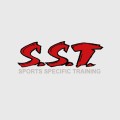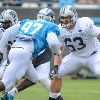THE SKINNY ON STEVIA
In our last article we talked about aspartame and the controversy surrounding it. However, in this instalment we would like to focus on aspartame’s alter ego (nemesis, brother from another mother, whatever you want to call it) Stevia.
For those who don’t know, or have never heard of it, Stevia is an herb that has a sweetening power unlike any other. The herb is native to Paraguay and is nothing new to the people in the region. It was in use well before the 1800’s to sweeten teas and also chewed simply for the sweet taste, kind of like our modern day Bazooka Joe bubble gum. (minus the bubble and elementary school comics).
Good, great, grand! Here comes the same circle of dog you know what that we stepped in when aspartame came out. The same claims, low carb, non-caloric sweetener that will undoubtedly cause cancer or contains chemicals that researchers will find 15 years after we start using it. Trust me; I’m on your side. I’m very cautious when something “groundbreaking” is discovered. It’s much like the pill that can shed 10 pounds in 10 days, make you stronger, better in bed, more attractive and allows you to drive that new sports car.
Claims are made everyday. Claims mean nothing if the person doing the claiming is the same company doing the researching/marketing. That’s what intrigued me about Stevia. No company has the exclusive rights to it yet, as far as my knowledge. This, in my opinion makes the research unbiased.
So what’s the deal with stevia? Is it safe? What does research say? Can it replace my sugar packets? Not to sound like Mr. Miyagi, but slow down young grasshopper, one step at a time.
As with most studies, initial experiments began with testing on animals. Do we approve, not really, but it beats testing it on humans first (insert debate here). In 1991, a study was conducted in Thailand and daily ingestion of stevioside, the main sweetening agent in stevia, and its effects on two subsequent generations (think of passing on diabetes onto your children). The study was comprised of 4 groups of 20 hamsters (10 males and 10 females). 3 groups were fed 500mg/gk, 1000mg/kg and 2500mg/kg respectively and the fourth group was kept as a control. The dosages were high, as the estimation for human consumption in around 2 mg/kg.
The results – The study showed no significant difference in the average growth of the first generation of hamsters in the groups receiving stevioside — no matter what dosage they were given. Even the third generation of hamsters, at 120 days of age, showed no significant differences in body weight — no matter which group they were in.
In summary, no growth or fertility abnormalities were found in hamsters of either sex. Mating was efficient and successful.
The researchers agreed, “The results of this study are astonishing. Stevioside at a dose as high as 2,500 mg/kg did not do any harm to these animals. We conclude that stevioside at a dose as high as 2.5 grams per kilogram of body weight affects neither the growth nor reproduction in hamsters.” (Sahelian, 1999).
Still skeptical?
“stevia is safe for human consumption as per intended usage, that is, as a sweetener”
(Mauro Alvarez, Ph.D., Brazil)
“In this well-chronicled history of stevia, no author has ever reported any adverse human health consequences associated with consumption of stevia leaf”
(Supplement to GRAS affirmation petition no. 4G0406, 1995)
“stevia is a completely safe health-promoting herb”
(Juan Esteban Aguirre, Paraguayan Ambassador to the United States, in a letter to the U.S. Food and Drug Administration, September 23, 1993)
If there is nothing bad to be said about stevia, why did it take so long for it to enter our society and become widely accepted. After all, it has been in use for hundred’s of years and there is little to no publications or studies negating its beneficial use. If anyone has ever seen Fahrenheit 911 or Who Killed the Electric Car, you know that there are heavy political ties behind everything.
Big brother always has a selfish agenda. Mauro Alvarez has been studying stevia longer than anyone else. The FDA tried to prove that stevia is unsafe by mis-citing his study. Any publication can be interpreted to suit a particular agenda. In his 1998 response letter to the FDA Alvarez cited:
“Even if they have reviewed these studies, the only possible way to report that the results showed detrimental effects is by taking information out of context. If this is the case, one concludes that these FDA scientists are incompetent and irresponsible, or if not, they must belong to some sort of conspiracy group to carry on a sinister agenda against this plant with the objective to keep it away from American consumers by attributing to it safety issues that do not exist.”
In 1993, in a letter to FDA Commissioner David Kessler by Jon Kyl, was cited as reading:
“(The FDA action on stevia is) a restraint of trade to benefit the artificial sweetener industry.”
Sunrider International has been a premier manufacturer of high quality herbal products since 1982. In 1985, the FDA seized all of the Sunrider’s supply of stevia. During the seizure, Kerry Nielson (director of operations at the time) was told by an FDA agent (off the record):
“I had one guy from the FDA tell me ‘if we wanted to make carrots (be) against the law, we could do it.'”
We write articles to benefit and inform the general public as to the facts behind such topics as this. Only you can make your own decisions, we just try to inform you of the controversies and reasoning that most people don’t know about. As far as stevia goes, we have no problem. I’m not much for sweetening my coffee, but if I had a choice, stevia would definitely be my first choice before sugar or the Darth Vader of sweeteners….Aspartame. If you enjoy the taste of stevia, I say go ahead and indulge your sweet tooth.
For more information and access to great articles and videos please visit www.sstcanada.com
Sports Specific Training


